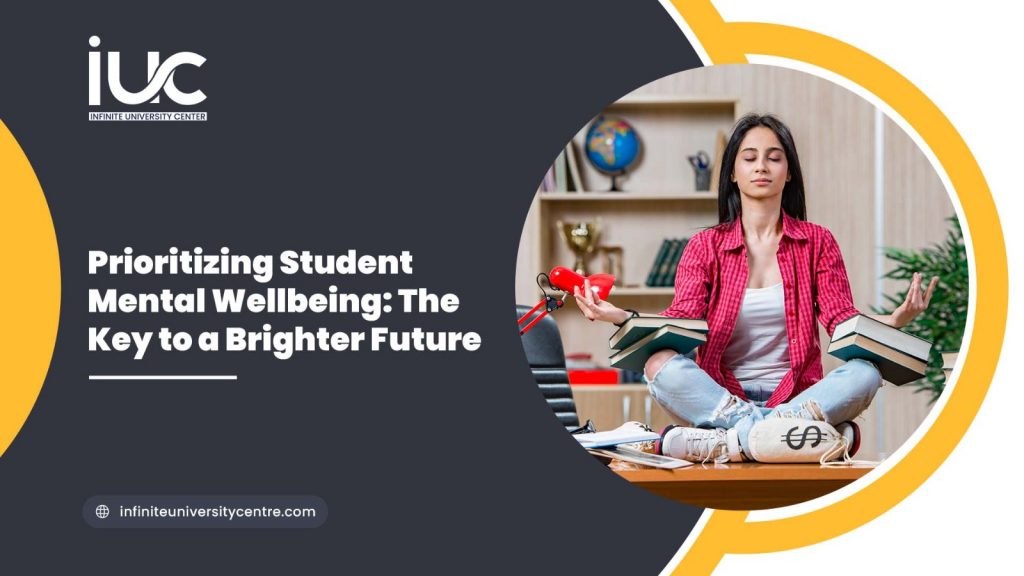In today’s fast-paced world, student mental wellbeing is more crucial than ever. With the increasing demands of academics, social media, and extracurricular activities, students face unprecedented levels of stress, anxiety, and pressure. As a result, their mental health is suffering, impacting their academic performance, social interactions and long-term personal development. In this article, we will explore the importance of prioritizing student mental wellbeing and provide actionable strategies for creating a supportive learning environment.
1. Mental health impacts Academic performance
Research has shown that mental health issues, such as anxiety and depression, can significantly impair a student’s ability to learn and retain information. When students are emotionally and psychologically healthy, they can devote their attention and time wholeheartedly to their studies, leading to better academic outcomes. A recent study by the World Health Organization (WHO) found that mental health issues account for a considerable portion of the global disease burden among youth. Therefore, it is critical to support students’ mental health and establish the groundwork for lifelong learning and positive personal development.
2. Fostering a Supportive Learning Environment
Educational institutions must design a learning system that facilitates personal learning and development for students. Addressing mental wellbeing essentials can provide students with a platform to understand themselves and engage with their surroundings better. When students feel supported and encouraged, they are more inclined to seek help when needed and don’t shy away from problems. This can further help them confront challenges and seek assistance when necessary. By fostering a supportive learning environment, institutions can help students develop emotional intelligence, self-awareness, and healthy coping mechanisms.
3. Mitigating the Effects of Digital overload
Growing up as digital natives, young minds are exposed to information, self-comparison, and self-denigrating feelings at an unprecedented scale. This constant connectedness and need for validation can lead to feelings of lower self-esteem, overwhelm, and disconnection. Empowering students with conscious habits that encourage them to connect with themselves, peers, and mentors offline can help them develop positive associations while addressing the judicious use of technology. By promoting digital literacy and responsible tech use, institutions can help students maintain a healthy balance between their online and offline lives.
4. Long-term Happiness and success
When equipped with mental wellbeing essentials, students can handle life’s challenges more effectively, leading to long-term contentment and wellbeing. Good mental wellbeing habits can empower individuals to make significant contributions to society, choose fulfilling careers, and rise to adversities. By investing in students’ welfare, we can create a future generation with lower healthcare costs, a more productive workforce, and a happier society. Institutions can play a vital role in shaping the mental wellbeing of their students, setting them up for success in all aspects of life.
5. Breaking down Barriers to Mental Wellbeing
Mental health was once a taboo topic, but increasing awareness and acceptance have led to more open conversations. However, inadequate resources and lesser awareness of available support services can still pose obstacles for those seeking help. Schools are now providing mental health counseling services, but a multi-faceted approach is required to address these issues. By involving policymakers, educational institutions, healthcare providers, and community stakeholders, we can establish a nurturing environment conducive to every student’s success. Through policy reforms, funding for mental health initiatives, and advancing mental health literacy, we can create a supportive ecosystem that prioritizes student mental wellbeing.
To conclude, prioritizing student mental wellbeing is crucial for building a better future. By addressing mental health concerns, fostering a supportive learning environment, mitigating the collateral effects of digital alchemy, promoting long-term contentment and wellbeing, and sliding past obstacles to wellbeing, we can unlock student potential and create a more promising and resilient future. Institutions, policymakers, and community stakeholders must work together to establish a culture that prioritizes student mental wellbeing, setting them up for success in all aspects of life.

